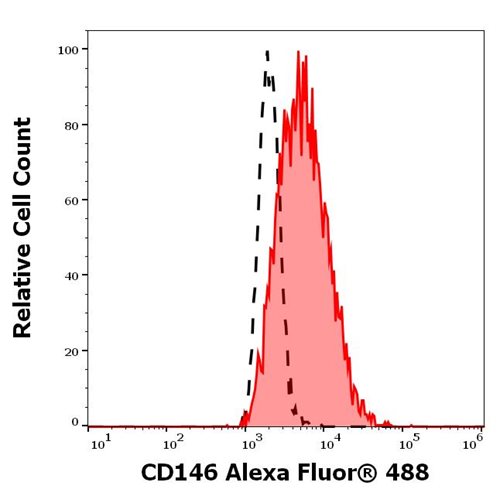Polyclonal Antibody to ATF2 (Ab-71 or 53)

Figure 1: Western blot analysis of extracts from HT29 and K562 cells using ATF2(Ab-71 or 53) Antibody 35-1388 .
Roll over image to zoom in
Shipping Info:
For estimated delivery dates, please contact us at [email protected]
| Format : | Purified |
| Amount : | 100 µl |
| Isotype : | Rabbit IgG |
| Content : | Supplied at 1.0mg/mL in phosphate buffered saline (without Mg2+ and Ca2+), pH 7.4, 150mM NaCl, 0.02% sodium azide and 50% glycerol. |
| Storage condition : | Store the antibody at 4°C, stable for 6 months. For long-term storage, store at -20°C. Avoid repeated freeze and thaw cycles. |
Transcriptional activator, probably constitutive, which binds to the cAMP-responsive element (CRE) (consensus: 5'-GTGACGT[AC][AG]-3'), a sequence present in many viral and cellular promoters. Interaction with JUN redirects JUN to bind to CRES preferentially over the 12-O-tetradecanoylphorbol-13-acetate response elements (TRES) as part of an ATF2-c-Jun complex.
Sevilla A, et al. (2004) J Biol Chem. 279(26):27458-27465.
Waetzig G H, et al. (2002) J Immunol. 168(10): 5342-5351.
Abdel-Hafiz H A, et al. (1992) Mol Endocrinol. 6: 2079-2089.
Gupta S, et al. (1995) Science. 267: 389-393.
Van Dam H, et al. (1995) EMBO J. 14(8): 1798-1811.
Predicted MW: 65-75 kd, Western blotting: 1:500~1:1000, Immunohistochemistry: 1:50~1:100, Immunofluorescence: 1:100~1:200
For Research Use Only. Not for use in diagnostic/therapeutics procedures.
| Subcellular location: | Nucleus, Cytoplasm, Mitochondrion outer membrane |
| Post transnational modification: | Phosphorylation of Thr-69 by MAPK14 and MAPK11, and at Thr-71 by MAPK1/ERK2, MAPK3/ERK1, MAPK11, MAPK12 and MAPK14 in response to external stimulus like insulin causes increased transcriptional activity. Phosphorylated by PLK3 following hyperosmotic stress. Also phosphorylated and activated by JNK and CaMK4. ATM-mediated phosphorylation at Ser-490 and Ser-498 stimulates its function in DNA damage response. Phosphorylation at Ser-62, Thr-73 and Ser-121 activates its transcriptional activity. Phosphorylation at Thr-69 or Thr-71 enhances its histone acetyltransferase (HAT) activity. |
| Tissue Specificity: | Ubiquitously expressed, with more abundant expression in the brain. |
| BioGrid: | 107776. 213 interactions. |
|
There are currently no product reviews
|


















.png)











